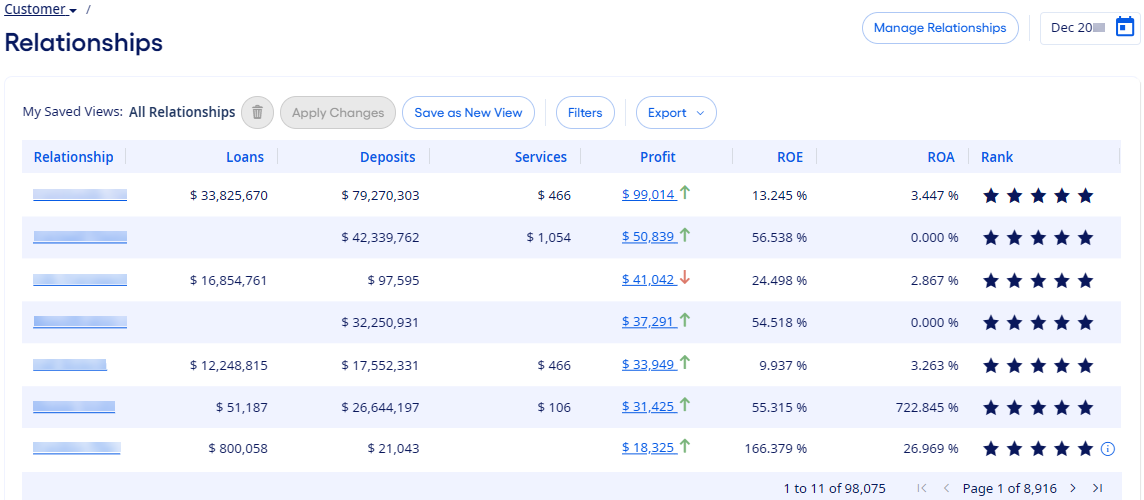Relationships
The Relationships page allows you to break down relationship information using the default sort order, sorting through column headings, or using the filtering tool.
If your institution is licensed for the Customer Profitability module, then selecting Customer from the menu opens the Relationships page. This page shows all the relationships that you are authorized to view. This list includes your relationships and any relationships belonging to officers who are assigned to you.

The default sort order for all the relationships that you are authorized to see is set by descending profit. If more than 10 relationships exist, then selecting the paging options at the end of the list advances to other pages. The information that is provided for each relationship is:
- Deposits
- The sum of all deposits for customers included in the relationship.
- Loans
- The sum of all the loans for customers included in the relationship.
- Profit
- The sum of all the profits for customers included in the relationship. The arrow next to the amount represents the relationship's profit trend in the last month. Select the Profit Amount link to access the Profit Trend Detail page.
- Rank
- The ranking that is assigned to the relationship that is based on the institution's established ranking criteria.
- ROA
- The relationship's return on assets (ROA).
- ROE
- The relationship's return on equity (ROE).
- Services
- The sum of all the services for customers included in the relationship.
Column Headings
Selecting any of the column headings allows you to sort the entire grid by the values in the selected column in either ascending or descending order. Each new sort is unique and replaces the previous sort.
Filters
The application's Filters tool lets you arrange the data in the grid in any configuration. You can apply one or multiple filters.
Saved Views
When you first navigate to the Relationships
page, the All Relationships view is the default view that shows all
the available data with no sorting, filtering, or search parameters applied. If you have
saved other views of sorted or filtered data, then you can select the My Saved
Views drop-down list to select the view that you want. To save a new view or
change the name of the current view, you can select Save As New View.
Saving views lets you retrieve specific data quickly and easily based on the defined
parameters. You can use  Delete to remove a view that you no longer need.
Delete to remove a view that you no longer need.
Exporting
You can export the grid to a .csv file or to Microsoft®Excel®.